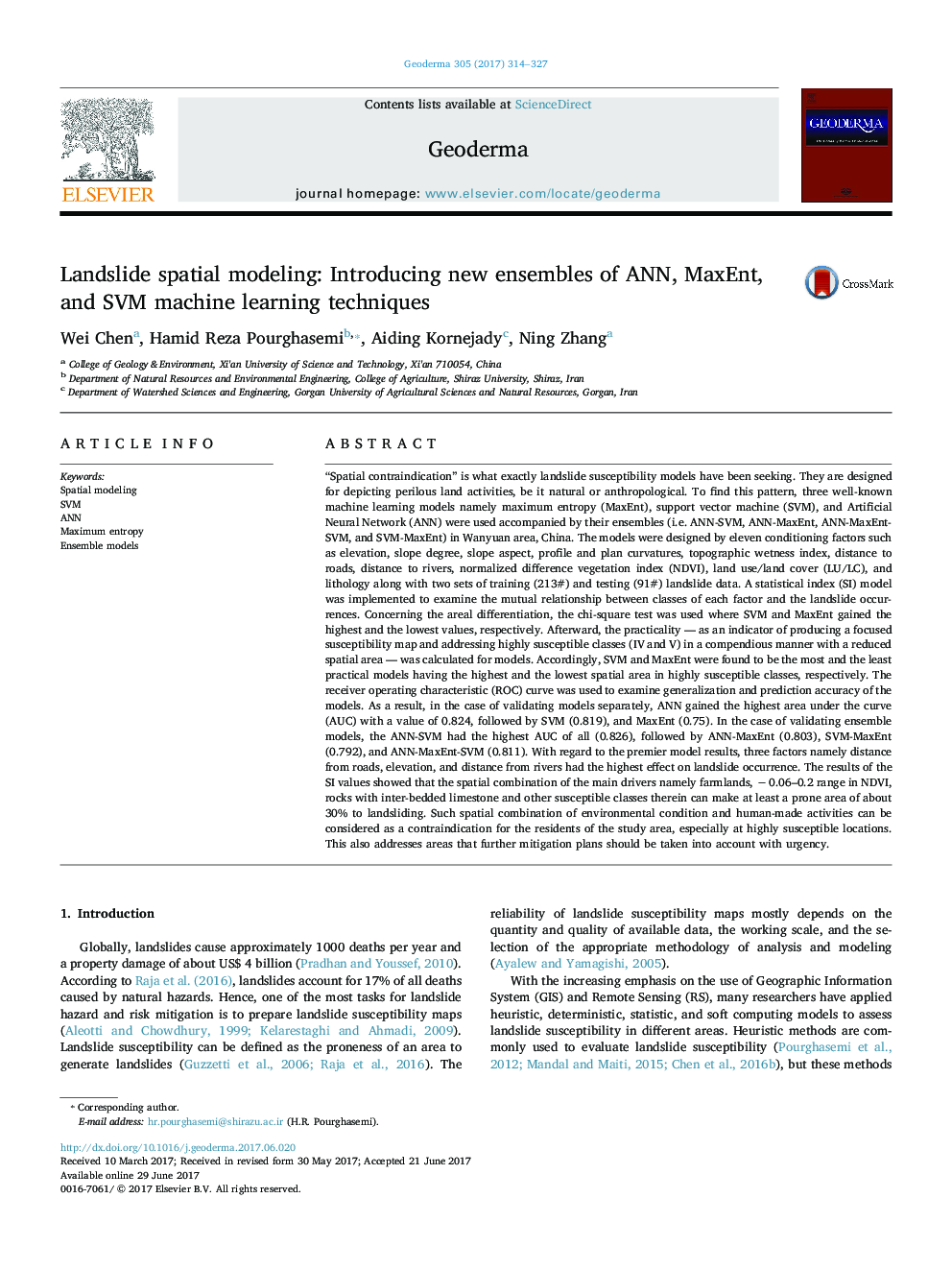| کد مقاله | کد نشریه | سال انتشار | مقاله انگلیسی | نسخه تمام متن |
|---|---|---|---|---|
| 5770300 | 1629412 | 2017 | 14 صفحه PDF | دانلود رایگان |

- Landslide spatial modeling using machine learning techniques
- Introducing some new ensemble models of ANN, MaxEnt, and SVM machine learning techniques
- Selection of the best single or ensemble models for regional modeling of landslide
“Spatial contraindication” is what exactly landslide susceptibility models have been seeking. They are designed for depicting perilous land activities, be it natural or anthropological. To find this pattern, three well-known machine learning models namely maximum entropy (MaxEnt), support vector machine (SVM), and Artificial Neural Network (ANN) were used accompanied by their ensembles (i.e. ANN-SVM, ANN-MaxEnt, ANN-MaxEnt-SVM, and SVM-MaxEnt) in Wanyuan area, China. The models were designed by eleven conditioning factors such as elevation, slope degree, slope aspect, profile and plan curvatures, topographic wetness index, distance to roads, distance to rivers, normalized difference vegetation index (NDVI), land use/land cover (LU/LC), and lithology along with two sets of training (213#) and testing (91#) landslide data. A statistical index (SI) model was implemented to examine the mutual relationship between classes of each factor and the landslide occurrences. Concerning the areal differentiation, the chi-square test was used where SVM and MaxEnt gained the highest and the lowest values, respectively. Afterward, the practicality - as an indicator of producing a focused susceptibility map and addressing highly susceptible classes (IV and V) in a compendious manner with a reduced spatial area - was calculated for models. Accordingly, SVM and MaxEnt were found to be the most and the least practical models having the highest and the lowest spatial area in highly susceptible classes, respectively. The receiver operating characteristic (ROC) curve was used to examine generalization and prediction accuracy of the models. As a result, in the case of validating models separately, ANN gained the highest area under the curve (AUC) with a value of 0.824, followed by SVM (0.819), and MaxEnt (0.75). In the case of validating ensemble models, the ANN-SVM had the highest AUC of all (0.826), followed by ANN-MaxEnt (0.803), SVM-MaxEnt (0.792), and ANN-MaxEnt-SVM (0.811). With regard to the premier model results, three factors namely distance from roads, elevation, and distance from rivers had the highest effect on landslide occurrence. The results of the SI values showed that the spatial combination of the main drivers namely farmlands, â 0.06-0.2 range in NDVI, rocks with inter-bedded limestone and other susceptible classes therein can make at least a prone area of about 30% to landsliding. Such spatial combination of environmental condition and human-made activities can be considered as a contraindication for the residents of the study area, especially at highly susceptible locations. This also addresses areas that further mitigation plans should be taken into account with urgency.
Journal: Geoderma - Volume 305, 1 November 2017, Pages 314-327